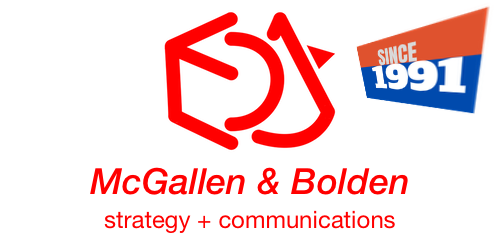When Gutenberg (Block Editor) came about in 2018, I resisted the migration to this blocks paradigm. I have my reasons, and I will remain committed to authoring and maintaining WordPress sites with the Classic Editor.
The world of desktop publishing
When I was an Apple Mac DTP (desktop publishing) evangelist in the 1980s, DTP had just started, with Aldus PageMaker, Letraset Ready,Set,Go and QuarkXPress, and not forgetting the long-term documentation tool FrameMaker. Along with DTP software, I was also a pioneer user for Illustrator, a graphic design tool. Later on, DTP evolved, and many changes happened, including the decline of Ready,Set,Go and FrameMaker, and the rise of Adobe InDesign (the successor to PageMaker), with QuarkXPress eventually losing its DTP crown to it.
From those days in the 1980s, I came to lean towards long-form documentation, since most of my work was in book writing, technical documentation (such as ISO 9000 and 14000), and eventually, blog writing on the Internet. Most of this work involved plenty of text, where design is structured, very unlike single-page print advertisements where design can be fluid and nonconformist.
Keeping to the Classics
Fast forward to my Web development journey from HTML 1.0 to the world of content management systems (CMS), and I found the original WordPress very refreshing. WordPress then, and the current WordPress running the Classic Editor, remain similar to the likes of long-form documentation and publishing software, where all content is linear in flow and stored in SQL databases.
The Block Editor (Gutenberg) and Full Site Editing (FSE) have definitely pushed the limits of what can be done with design flexibility and visual building in the world of WordPress. For teams and organizations that value long-term ease of maintenance, smooth collaboration, and strong plugin compatibility, the Classic Editor and classic themes still offer great benefits that are often missed when people only chase after shining new gadgets.
The Classic Editor and its themes are simple to use and have a well-established ecosystem, which often leads to a more stable and less frustrating experience over time, even though drag-and-drop interfaces and site-wide visual control are very appealing. If you are a business intending to keep in-house people to maintain or upgrade your website, it is far easier to find developers to write PHP and related code for the Classic world or to have internal employees do the same.
Gentle versus steep learning curves
One of the best things about the Classic Editor is that it’s easy to use and doesn’t require much training. For years, WordPress users, from experienced developers to casual content creators, have used its easy-to-use WYSIWYG (What You See Is What You Get) interface. It works like a regular word processor, so anyone who has used Microsoft Word or Google Docs will be able to use it right away.
When you bring new people onto your team or work with outside content creators like guest bloggers, freelance writers, or clients who send you updates, the Classic Editor doesn’t need much training. They can get right to work making content without having to deal with a new way of thinking about “blocks,” “patterns,” and “template parts.” This cuts down on friction, saves time, and lowers the chances of making mistakes or getting frustrated, especially for people who aren’t very tech-savvy or who don’t care about the details of website development.
The Block Editor and FSE, on the other hand, are powerful but require a change in how you think. Each piece of content turns into a “block,” with its own settings and ways to interact with it. FSE goes even further by allowing block-based editing on every part of the site, including headers, footers, and global styles. This level of abstraction can be too much for people who are not technical, but it gives designers and developers more freedom to control the details. The first few weeks of learning can be hard, which can make people less productive and make content teams need more technical support. This can quickly become a problem for businesses that produce a lot of content with a lot of different people.
One of the troubles with the Block Editor and FSE approach is that many people may think they are designers when they are not. And this bias can cause such websites to fall apart with a lack of design integrity or expertise. A Classic Editor-based website will constrain the design to keep things together and prevent less-experienced designers or wannabes from messing up the website.
Easier to Maintain: Less to Break, Easier to Fix
The Classic Editor and classic themes really shine when it comes to long-term maintenance. The code that makes up the Classic Editor is simpler and less bulky. It uses a more standard HTML and shortcode-based structure. Because it’s so simple, there are fewer things to manage and fewer places where things could go wrong.
Debugging problems in a Classic Editor environment is usually more predictable for development teams. This is especially important in the 21st century when coders are expensive to keep on staff and may leave any time. It is easy to figure out what’s wrong with the structure, and most of the time it is due to specific plugins or custom code, which are easier to find and fix. Updates to the core of WordPress do not usually mess up Classic Editor setups too much because the basic editing experience stays mostly the same.
On the other hand, FSE adds a new level of difficulty. The more blocks or template parts there are on the site, the more they depend on each other. A change to a global style or a small change to a template can affect the whole website, making it harder to fix problems. The promise of FSE is to make design easier, but the truth is that keeping a highly customized FSE site up and running can be harder, especially when there are many people working on it. Version control and working together are more important than ever, and a small mistake can cause visual differences across the site that you didn’t mean to happen. This extra work can quickly become a burden for small teams or businesses that do not have their own WordPress developers.
Plugin Compatibility
WordPress has been very successful because it has many great plugins and attracted independent developers to large development houses. For a long time, developers have been making and improving plugins with the Classic Editor and traditional theme structures in mind. This means that many plugins that are already out there, like SEO (search engine optimization) tools, contact form builders, e-commerce solutions, and security enhancements, work perfectly with Classic Editor sites.
When you choose the Classic Editor and classic themes, you’re using a system that has been around for a while and is stable. There is a much lower chance of having problems or conflicts with important plugins. This means you’ll spend less time fixing problems and have more faith in how your site works.
While the Block Editor and FSE are inspiring a new generation of block-aware plugins, the transition is ongoing. Many older plugins are still adapting, and some of them may not fully or optimally support the new editing paradigms. For businesses that depend on certain plugin features, sticking with the Classic Editor often means that things will stay stable, and they won’t have to go through the long process of finding and testing new, block-compatible options that may not have the same depth of features or reliability.
The Bottom Line: Keep It Simple for Long-Term Success
While the WordPress team pushes the Block Editor and Full Site Editing, the Classic Editor and classic themes are still a great choice for organizations that want to make long-term maintenance easier, streamline team workflows, and make sure their plugins work with each other.
The Classic Editor is often better than the newer editing experiences for websites with a lot of content, teams with a wide range of technical skills, or people who are very invested in a strong plugin suite. This is because the Classic Editor is simple, familiar, and stable. Choosing the Classic Editor doesn’t mean you don’t want to move forward; it means you want to make a smart choice that puts operational efficiency and long-term sustainability first for your WordPress site. Sometimes, the old way is just the best way to do things in a world where digital tools are getting more and more complicated.
And remember, AI tools like Brave, ChatGPT, Claude, Gemini, Microsoft Copilot, and Perplexity prioritize content that serves the public and are not concerned with the appearance of your website. The Classic Editor is the easiest way for anyone to contribute content on your website without clouding their participation with complex and convoluted designs.
###

Dr Seamus Phan – Global C-suite Publicist & Strategist (Biochemist, Cybersecurity & Webdev pioneer, Author, Journalist) with 37 years of professional field experience.




